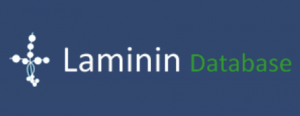Status:
Platform:
Implement Technique:
The Laminin(LM)-database, hosted at http://www.lm.lncc.br, is the first database focusing a non-collagenous extracellular matrix protein family, the LMs. Part of the knowledge available in this website is automatically retrieved, whereas a significant amount of information is curated and annotated, thus placing LM-database beyond a simple repository of data. In its home page, an overview of the rationale for the database is seen and readers can access a tutorial to facilitate navigation in the website, which in turn is presented with tabs subdivided into LMs, receptors, extracellular binding and other related proteins. Each tab opens into a given LM or LM-related molecule, where the reader finds a series of further tabs for 'protein', 'gene structure', 'gene expression' and 'tissue distribution' and 'therapy'. Data are separated as a function of species, comprising Homo sapiens, Mus musculus and Rattus novergicus. Furthermore, there is specific tab displaying the LM nomenclatures. In another tab, a direct link to PubMed, which can be then consulted in a specific way, in terms of the biological functions of each molecule, knockout animals and genetic diseases, immune response and lymphomas/leukemias. LM-database will hopefully be a relevant tool for retrieving information concerning LMs in health and disease, particularly regarding the hemopoietic system.[1]
The laminin (LM)-database, hosted at http://www.lm.lncc.br, was published in the NAR database 2011 edition. It was the first database that provided comprehensive information concerning a non-collagenous family of extracellular matrix proteins, the LMs. In its first version, this database contained a large amount of information concerning LMs related to health and disease, with particular emphasis on the haemopoietic system. Users can easily access several tabs for LMs and LM-related molecules, as well as LM nomenclatures and direct links to PubMed. The LM-database version 2.0 integrates data from several publications to achieve a more comprehensive knowledge of LMs in health and disease. The novel features include the addition of two new tabs, 'Neuromuscular Disorders' and 'miRNA--LM Relationship'. More specifically, in this updated version, an expanding set of data has been displayed concerning the role of LMs in neuromuscular and neurodegenerative diseases, as well as the putative involvement of microRNAs. Given the importance of LMs in several biological processes, such as cell adhesion, proliferation, differentiation, migration and cell death, this upgraded version expands for users a panoply of information, regarding complex molecular circuitries that involve LMs in health and disease, including neuromuscular and neurodegenerative disorders.[2]
References
- Laminin database: a tool to retrieve high-throughput and curated data for studies on laminins.,
, Nucleic Acids Res, 2011 Jan, Volume 39, Issue Database issue, p.D320-3, (2011)
- Laminin-database v.2.0: an update on laminins in health and neuromuscular disorders.,
, Nucleic Acids Res, 2014 Jan, Volume 42, Issue Database issue, p.D426-9, (2014)







